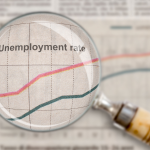Get the most passive income possible with these top dividend stocks
:max_bytes(150000):strip_icc():format(jpeg)/GettyImages-1710999990-e174513b1e184f5aa002c66e31013d91.jpg)
Bjoern Wylezich/Getty Images
In an uncertain market, dividend-paying stocks can offer a cushion against volatility and provide steady income.
The top dividend-paying stocks for July 2024 include the energy companies Diversified Energy Company (DEC) and Ecopetrol (EC), along with the transportation companies BW LPG Ltd. (BWLP) and Euronav (EURN). All were also included on the list in June.
Key Takeaways
- Companies with dividend stocks regularly share a part of their profits with shareholders, typically every quarter, though some pay semiannually or even yearly.
- The dividend yield is a measure that compares the yearly dividend amount to the stock’s current price, expressed as a percentage.
- As a company’s stock price shifts, the dividend yield adjusts accordingly, reflecting the changes in this ratio.
Below, we look at the top 10 dividend stocks listed on either the New York Stock Exchange (NYSE) or Nasdaq as measured by forward dividend yield, excluding companies with payout ratios that are either negative or over 100%. The data below are as of June 28, 2024.
| Ticker | Company | Sector | Market Cap ($M) | Dividend Yield (%) | Price ($) |
| EURN | Euronav NV | Transportation | 3,336 | 34.38 | 16.54 |
| EC | Ecopetrol S.A. | Energy Minerals | 22.94 | 25.05 | 11.19 |
| DEC | Diversified Energy Company | Energy Minerals | 633.47 | 13.49 | 22.21 |
| BWLP | BW LPG Limited | Transportation | 2,508 | 18.93 | 19.08 |
| OXLC | Oxford Lane Capital Corp. | Investment Trusts/Mutual Funds | 1,438 | 17.50 | 5.42 |
| ECC | Eagle Point Credit Company Inc. | Investment Trusts/Mutual Funds | 858.14 | 16.70 | 10.05 |
| RC | Ready Capital Corporation | Finance | 1,410 | 16.21 | 8.18 |
| TRMD | TORM plc | Transportation | 3,645 | 14.79 | 38.77 |
| IGR | CBRE Global Real Estate Income Fund | Investment Trusts/Mutual Funds | 695.65 | 14.49 | 5.04 |
| XFLT | XAI Octagon Floating Rate & Alternative Income Trust | Investment Trusts/Mutual Funds | 414.53 | 14.20 | 7.05 |
Why Are These the Best Dividend Stocks?
We selected the 10 best dividend stocks above based on the highest forward dividend yield, among those listed on the Nasdaq or New York Stock Exchange. We excluded stocks under $5, those with a market cap of less than $300 million, and those with a daily trading volume below 100,000. We also excluded companies with payout ratios that are either negative or over 100%.
Investors prioritizing dividends are looking for a steady income stream alongside the potential for stock price appreciation. However, future dividends are not a given even for companies with a good track record. Some considerations to keep in mind:
Dividends are adjusted: During moments of economic uncertainty, a company may reduce or cut its dividend payments altogether to preserve capital to weather storms previewed ahead. Alternatively, companies may increase their dividend payments in a bullish economic environment to attract investors.
Changes in the percentage yield: These stocks may offer a lower dividend yield when facing different overall market conditions, changes in financial stability, and adjustments to their market value.
Some dividend yields can mislead: Some dividend-paying companies may increase their dividend yield to attract investors in the short term, though higher dividends can be unsustainable. That is why it’s important to pay close attention to a company’s payout ratio.
How to Pick Dividend Stocks
Investors should pursue companies with robust fundamentals, long-term profitability, and a sustainable dividend yield that has consistently increased for some years.
How to Find Dividend Stocks
When reviewing dividend-paying companies, it is notable that certain sectors, such as finance, energy, and real estate investment trusts, typically pay higher dividends than other industries. When picking the right company, investors should also pay attention to a company’s peers to determine if a dividend yield is out of the ordinary for the sector.
What Should Investors Look For in Dividend Stocks?
Dividend yield: The dividend yield reflects the annual value of dividends received relative to a security’s per-share market value. You can calculate this by dividing the annual dividend per share by the current stock price, though most brokerage platforms and financial news sites publish such information.
For example, if Company ABC issues a dividend of $10 annually with a current share price of $100, it has a dividend yield of 10% ($10 / $100 = 10%). Investors pursuing high-yielding stocks can start by screening for issues with a divided yield above a certain percentage. Keep in mind that dividend yield is only one of many metrics to consider before investing.
Dividend payout ratio (DPR): The DPR gauges how much of a company’s earnings are paid to shareholders. Investors calculate the ratio by dividing total dividends by net income. This, too, can be found on financial sites and other platforms.
For instance, if Company ABC reports a net income of $50,000 and pays $15,000 in annual dividends, it would have a DPR of 30% ($15,000 / $50,000 = 30%). That is, the company pays 30% of its earnings to shareholders. Typically, a company that issues less than 50% of its net earnings in dividends is considered stable and has the potential for sustainable long-term earnings growth.
Dividend coverage ratio: This measures the number of times a company can pay dividends to its shareholders. Investors calculate the dividend coverage ratio by dividing a company’s annual earnings per share by its annual dividend per share.
For example, if Company ABC reported $10 million in net income with an annual dividend of $2 million to shareholders, it has a dividend coverage ratio of five ($10 million / $2 million). Usually, investors see a higher dividend coverage ratio as more favorable.
The Bottom Line
Investors pursuing dividend-paying companies should pay close attention to the overall financial condition of the stock they are planning to invest in. A company may offer a high dividend yield even when financially unstable, and it’s important not to invest without a proper understanding of the underlying stock.
It is essential to maintain a consistent strategy when going the dividend-payment route. There are advantages, including passive income, for choosing companies that issue dividends and provide a steady stream of income. Another great aspect of dividend investing is reinvesting dividends paid out by a company, using them to buy more shares, and taking advantage of compounding returns.
The comments, opinions, and analyses expressed on Investopedia are for informational purposes only. Read our warranty and liability disclaimer for more info.
As of the date this article was written, the author does not own any of the above stocks.
Read the original article on Investopedia.


